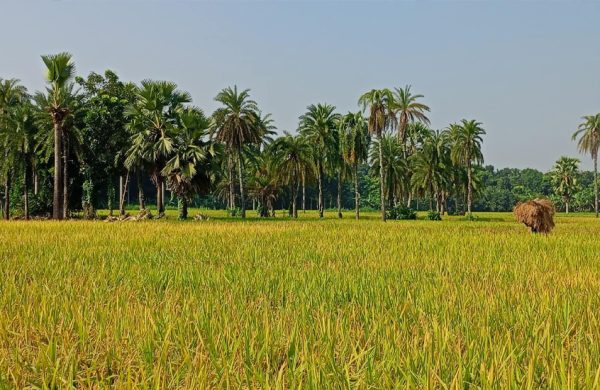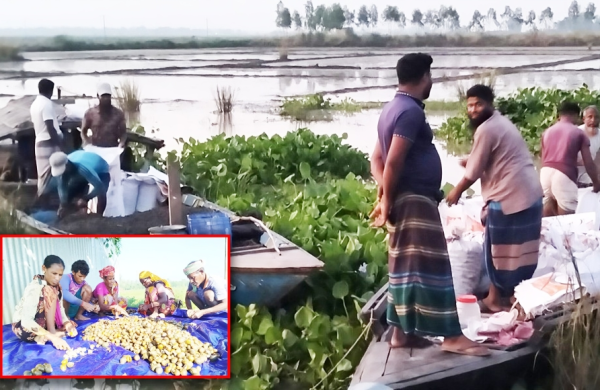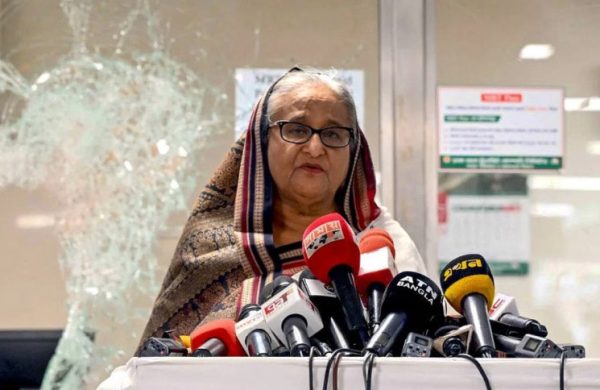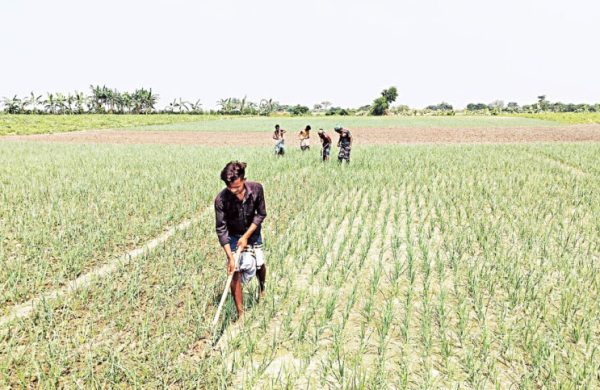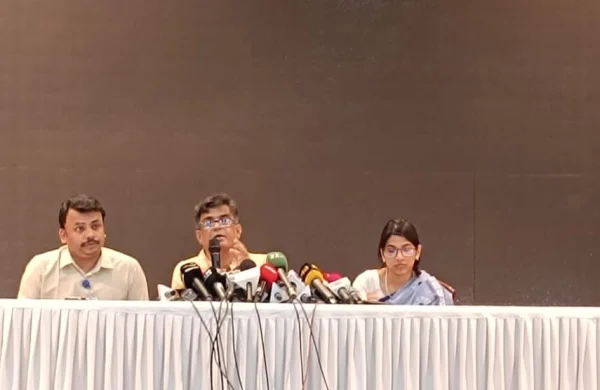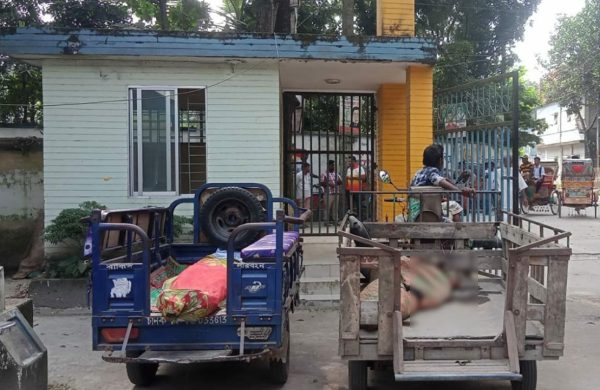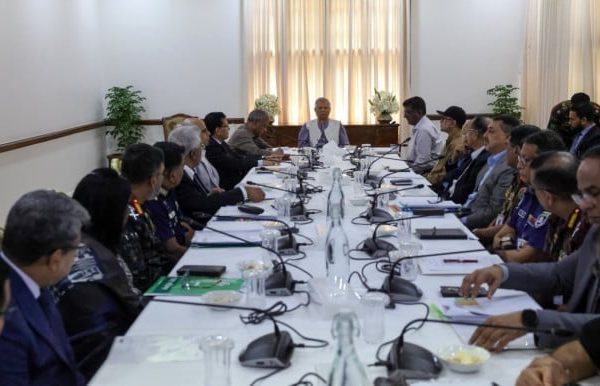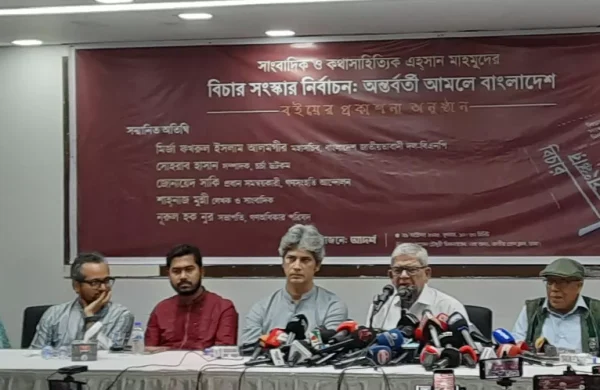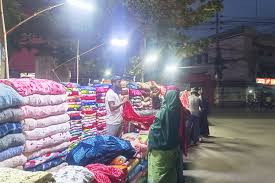Quiet revolution in fish farming
- Update Time : Saturday, September 6, 2025
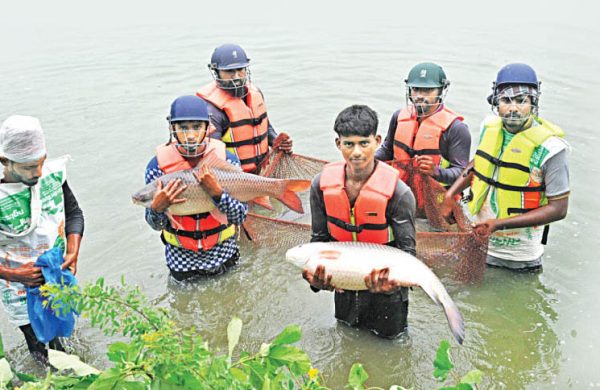
TDS Desk:
Over the decades, Bangladesh has lost vast swathes of its waterbodies as its population has kept growing. Fishermen saw their catches shrink year after year. Still, many in rural areas refused to let go of the old saying: “Mache bhat-e Bangali”, which roughly translates as fish and rice make a Bengali.
They dug ponds, stood waist-deep in water for hours at small hatcheries, and slowly built a thriving industry. Their determination ensured that fish curries never disappeared from Bengali meals.
Such stories of grit and enterprise abound in villages across the country.
Take Abdul Jalail Bakul, for example. Seventeen years ago, he dug two ponds on a field no larger than a football pitch at his village in Mymensingh. Locals in Anandipur laughed at the idea.
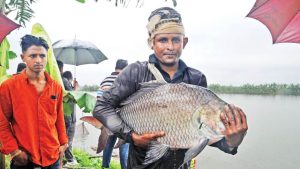
Today, the 56-year-old owns 25 ponds spread across 35 acres, rearing carp, pangas and tilapia.
When Bakul first started, he collected fries from hatcheries around Mymensingh, brought feed from Bhaluka upazila, and sold fish in the kitchen markets of Dhaka. Subsequently, traders from the capital began visiting his farm directly.
Now, Bakul says he will expand further if he can acquire more ponds.
Over the past decade, another villager of Anandipur, Anwar Hossain, has grown his farm from one pond to five.
With efforts by farmers like Bakul and Anwar, fish farming has transformed into a nationwide industry, feeding crores, employing lakhs, and pushing Bangladesh into the ranks of the world’s top producers.
AQUACULTURE TAKES THE LEAD
In fiscal year 2023-24, the country produced more than 50 lakh tonnes of fish, according to official data. Nearly 60 percent came from aquaculture, compared with only 16 percent in the early 1980s.
Rivers, haors and floodplains once supplied two-thirds of the national intake. Their share has now dropped to 28 percent, though the overall volume has held steady.
The gap has been filled by farmed fish, cultivated across 8.7 lakh hectares of ponds, canals and wetlands.
Aquaculture contributes 2.53 percent of GDP and 22 percent of agricultural GDP, supporting some 2 crore people, including 14 lakh women. Bangladesh is now the world’s second-largest producer of inland fish.
For households, the gains are nutritional as well as economic.
Fish provides nearly 60 percent of the nation’s animal protein intake. Daily consumption has reached 67.8 grams per person, surpassing the government’s 60-gram target.
Farmed species such as pangas and tilapia became staples over the past decade, replacing costlier wild fish like hilsa and Katla in many rural households.
Officials and fisheries experts credit a mix of regulation, investment and entrepreneurship.
According to them, seasonal bans helped replenish hilsa stocks. Hatcheries expanded the seed supply. And the Bangladesh Fisheries Research Institute (BFRI) introduced improved breeds and methods to tackle disease.
“Bangladesh’s success is the result of visionary policies combined with practical measures,” said Farida Akhter, adviser at the Ministry of Fisheries and Livestock. “Improved technologies reached farmers’ doorsteps, hatcheries and feed industries expanded, and conservation efforts like the hilsa ban paid off.”
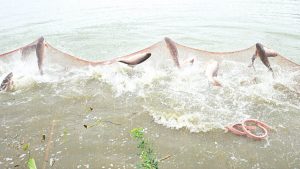
Fast-growing species such as pangas and tilapia, introduced in the 1990s and 2000s, spread quickly. Feed mills and oxygenated transport tanks reduced spoilage and the use of harmful preservatives.
“At the same time, export opportunities, particularly shrimp and frozen fish, created incentives for production expansion, while government subsidies, credit, and research support reduced risks for farmers,” Akhter added.
The private sector also played a vital role. More than 31 lakh farmers are now engaged in aquaculture.
“Together these initiatives not only boosted production by more than 20 lakh tonnes since FY10, but also enhanced rural livelihoods, nutrition security, and export potential, while setting a foundation for sustainable and climate-resilient fisheries development,” she said.
ABM Shamsul Alam, a farmer-turned-consultant from Mymensingh, recalled how it all began.
“I became involved in fish farming in the early 1990s, when commercial aquaculture in Bangladesh was still in its infancy. At that time, commercial farming was very rare,” said Alam.
“Some pioneers were experimenting with pangas from Thailand, but overall, the sector was undeveloped. Initially, I tried shrimp farming, but yields were too low to be sustainable. Around 2002, I shifted to tilapia, which proved much more viable.”
Alam was among the first to import Thai koi and later tilapia fingerlings, which he sold in Karwan Bazar at record prices. Koi eventually lost demand, but tilapia became a mainstay.
“Over time, local fish farming became not only a livelihood for traditional farmers but also a field where educated entrepreneurs began investing,” he said.
Today, Alam advises projects abroad, including pilot farms in Fiji that combine shrimp and tilapia.
THE REGIONAL HUBS
Mymensingh and Cumilla have become the country’s largest fish producing districts, each harvesting more than three lakh tonnes annually.
“There are some one lakh fish farmers in the district and they are cultivating some 15 varieties of fish, including some varieties developed by Bangladesh Fisheries Research Institute (BFRI). Mainly, carp fish are cultivated in the district,” said Mohammad Nazim Uddin, district fisheries officer in Mymensingh.
“Pangas is mainly cultivated in Bhaluka, Muktagacha and Trishal, while singi, koi, pabda and magur are mainly cultivated in Phulpur and Tarakanda. Many farmers are also involved in mixed fish cultivation,” said the fisheries officer.
In Rajshahi, the shift has been quieter but no less significant.
The district harvested 1.10 lakh tonnes in FY24, worth Tk 2,400 crore. Each day, around 300 tonnes of live fish are shipped out, most of it to Dhaka.
Among the leading players is SS Fish Farm, founded by Md Golam Saklayen, a chemistry student turned entrepreneur.
Inspired by a fish week campaign in the 1990s, he leased a pond and began farming. His business now spans up to 800 bighas, with trucks leaving daily carrying fish worth Tk 15-20 lakh.
AN UNEVEN BOOM
The boom has not benefited everyone equally. In Khulna and Satkhira, saline intrusion and flooding have forced farmers towards crabs and salt-tolerant species, though earnings remain unstable.
Feed prices have doubled in a decade, rising from Tk 600-700 a sack to Tk 1,400-1,500, said Rafiqul Islam, a grower in Godagari, Rajshahi. Other costs, such as lime and medicines, have also increased.
“I spent Tk 1.5 lakh this year on lime and other inputs to maintain pond health, but they did not work,” he said.
Islam estimates that 80 percent of small farmers face losses each year. Larger operators with more capital can hold fish longer and fetch better prices. Smaller ones are forced to sell early, often at thin margins.
Experts also warn of declining nutritional quality.
“Studies show that farmed fish often contain lower nutrients, partly due to poor-quality feed,” said Md Monirul Islam, professor of fisheries at Dhaka University.
“Heavy metals and antibiotics have also been detected in some farmed fish. Fish from polluted rivers face similar risks, as contaminants in water directly enter their bodies,” said the professor.
Officials say they are tackling the issue.
Fisheries adviser Akhter said extension services now promote “good aquaculture practice” and eco-friendly pond management. The government is encouraging local feed production, research into alternatives, and regular residue testing under the National Residue Control Plan.
“At the same time, we recognise that rising feed costs put pressure on farmers, so the government is encouraging local feed production, research on alternative ingredients, and cluster-based buying systems to reduce costs,” she added.
CLIMATE AND QUALITY STRAINS
For the local commercial fish farming, the hardest challenge comes from the environment.
“Government statistics suggest overall fish production rose by 2.5 percent this year, yet hilsa production fell by 7 percent and shrimp by 18 percent,” said Professor Islam, highlighting flaws in data collection.
In 2024, rainfall came late, temperatures soared, and extreme weather battered fish farms. In the Barind region, ponds that once held water for nine months now dry up within five. In Jashore, heavy rains submerged fields. Lightning has become frequent in haor wetlands, killing large stocks.
“Climate change is already affecting our fisheries through rising temperatures, floods, salinity intrusion, and erratic rainfall,” said Akhter. “To address this, the government is promoting climate-resilient practices, supporting research on salt- and heat-tolerant species, and strengthening early warning systems under the Blue Economy framework.”
But Professor Islam warned that adaptation efforts remain piecemeal and poorly funded. Bangladesh has yet to secure significant international climate finance for fisheries.
He said, “Most Department of Fisheries projects are small-scale, limited to awareness or pilot initiatives. PKSF has begun experimenting with crabs under Green Climate Fund projects, and the LGD is working in Haor areas, though conflicts often arise between fisheries and agriculture.”
As aquaculture expanded, food safety concerns grew. Reports surfaced of harmful chemicals being used to preserve fish and antibiotics applied excessively to prevent disease.
International buyers have taken notice. Shrimp exports, once Bangladesh’s top earner, suffered repeated rejections in the EU and US over residue and compliance lapses.
Md Abdur Rouf, director-general of the Department of Fisheries, said compliance is now a priority. “Beyond shrimp, we are promoting tilapia, pangas, koi, crab, and other live fish for overseas markets. International-standard labs and traceability systems are being developed.”
With better branding, he argued, Bangladesh could double export earnings within a decade.
Meanwhile, industry experts cautioned that while intensification has driven growth, it has also raised risks. Higher feed demand, chemical use and disease outbreaks loom large.
“We do not need more ponds. What we need is stronger monitoring for food safety and environmental standards,” said Saklayen in Rajshahi.
Officials insist that sustainability is now central to policy. Cluster-based farming, certification schemes, integrated models and biosecure pond management are being promoted, alongside research on climate-resilient species.
For farmers such as Alam, the message is clear. “The challenges of species selection, feed development, and marketing remain, but the trajectory shows how innovation and entrepreneurship drove the fish revolution. Now the time has come to motivate farmers towards safe fish production, reducing antibiotics and chemicals harmful to humans. This must be the task of government agencies.”
The challenge ahead is not simply to produce more fish, but to do so sustainably, protecting small farmers and fragile ecosystems alike.
“The future demand for fish will only grow with population,” said Professor Islam. “The question is whether production can be made climate-resilient and sustainable.”
For now, the ponds remain full and the markets well supplied. Whether Bangladesh can keep that promise in the years to come will depend on how it balances growth with resilience.
Source: The Daily star



